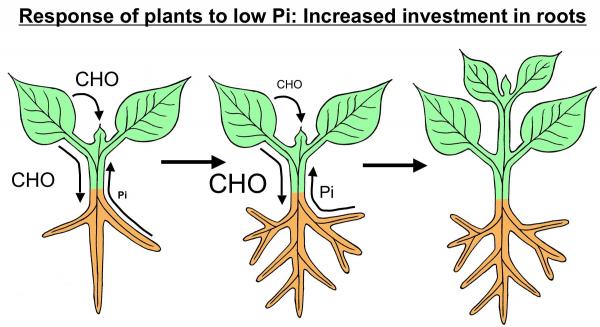Let's Get All Agro Carbo!

Here comes fall and after a summer of giving up the process, our turfgrass babies are getting ready to make some Carbos. I really love this time of year, because if you really pay attention to how the plant works and what the plant really needs, then some key decisions can pay off huge. This counts for recovery now, and emergent later.
Despite what some people try to hang around my neck, I'm a minimalist. Which means that first and foremost, I follow something that Dr. Mackenzie said years ago, which is not to spend a penny on the golf course unless the true value of that expenditure is understood and valuable. Meaning it has to work.
So here's a concept that most Turfheads ought to be living with, but most, like shutting off the water, find some sort of security doing just the opposite. Plants growing at limited nutrient supply invest more resources in the elaboration of the root system than over fertilized plants. This allows them to acquire more nutrients and later to invest more in the shoot. Real world: Show me a pampered, lazy, shallow rooted turf plant and I'll show you one who doesn't want to hang in there for an extra day (or hour) of limited irrigation.
To perform successfully, the plant has to integrate various physiological parameters like levels of Carbon, Hydrogen, Oxygen (formed as Carbohydrates), mineral nutrients and respective signals from source and sink tissues to reach "balanced decisions" on how to allocate its resources optimally.
 The graphic to the right shows the plant with a limited root system and limited nutrient uptake stepping up carbohydrate production to increase root development and a achieve a natural balance. Inside of this signaling process, the plant can call in some helpers and instead of simple investment of photosynthetic carbos to the shoots, those sugars can go to help develop symbiotic fungi and other soil life creatures. Then the little guys help fuel the development of root tissues.
The graphic to the right shows the plant with a limited root system and limited nutrient uptake stepping up carbohydrate production to increase root development and a achieve a natural balance. Inside of this signaling process, the plant can call in some helpers and instead of simple investment of photosynthetic carbos to the shoots, those sugars can go to help develop symbiotic fungi and other soil life creatures. Then the little guys help fuel the development of root tissues.
When the plant doesn't see any limitations, suppression of the fungus may be mediated by an induced defense response or by reduced symbiotic signaling. Alternatively, the fungus, which relies completely on the carbohydrates from the plant, could be controlled by reduced sugar supply. It's such a cool system.
So why and what do we do to help this? First, it's pretty simple, limited input. Just enough, not too much. With turfgrass, we have clipping yield to help guide us and you will know when you've gone too far because there will be a spike in shoot mass. Second, (and this is perhaps the most misunderstood key that can give the most benefit after a tough season...think recovery) is the addition of carbon based fertilizer. Because with the addition of Carbon, Carbohydrates and Minerals to the soil system, if we look at the way the plant really works, we are essentially helping the plant do what takes a lot of energy. At the same time, we aren't asking for the plant to go into lazy mode, it still has to do the job of feeding soil and balancing root and shoot energy.
Baffled? I was too, a bit. But when you stop thinking that no matter what you put down, it's better than nothing, then there is a first step to getting away from simply looking at pounds of Nitrogen to the ground as a turf fertilization guideline. And at the same time, let's remember that what we do isn't in a test tube. We can guideline to death, but if a specific situation calls for a specific action, then that action has to be taken. That's a stewardship thing.
This is a moment for me to speak up about a project that I'm really stoked about. I don't always agree with some of the research that goes on and with those that are doing it, because it often lacks the real world element that we all know is important to the job of growing grass. Dr. Micah Woods (of The Asian Turfgrass Center) and Drs. Larry Stowell and Wendy Gelernter (of PACE Turf) have come up with something that is near perfect brilliance. In truth, I wish I had thought of this, but hey...I can be humble and simple help promote some good work. Their Global Survey for Sustainable Turf is this really cool research project with a Citizen Style. If you are interested in some actual real world science then participation is pretty much a no brainer.
But when you stop thinking that no matter what you put down, it's better than nothing, then there is a first step to getting away from simply looking at pounds of Nitrogen to the ground as a turf fertilization guideline.
(And no, they didn't ask me to promote this. I simply see greatness in the thinking and the ultimate outcome.)



0 Comments
Recommended Comments
There are no comments to display.